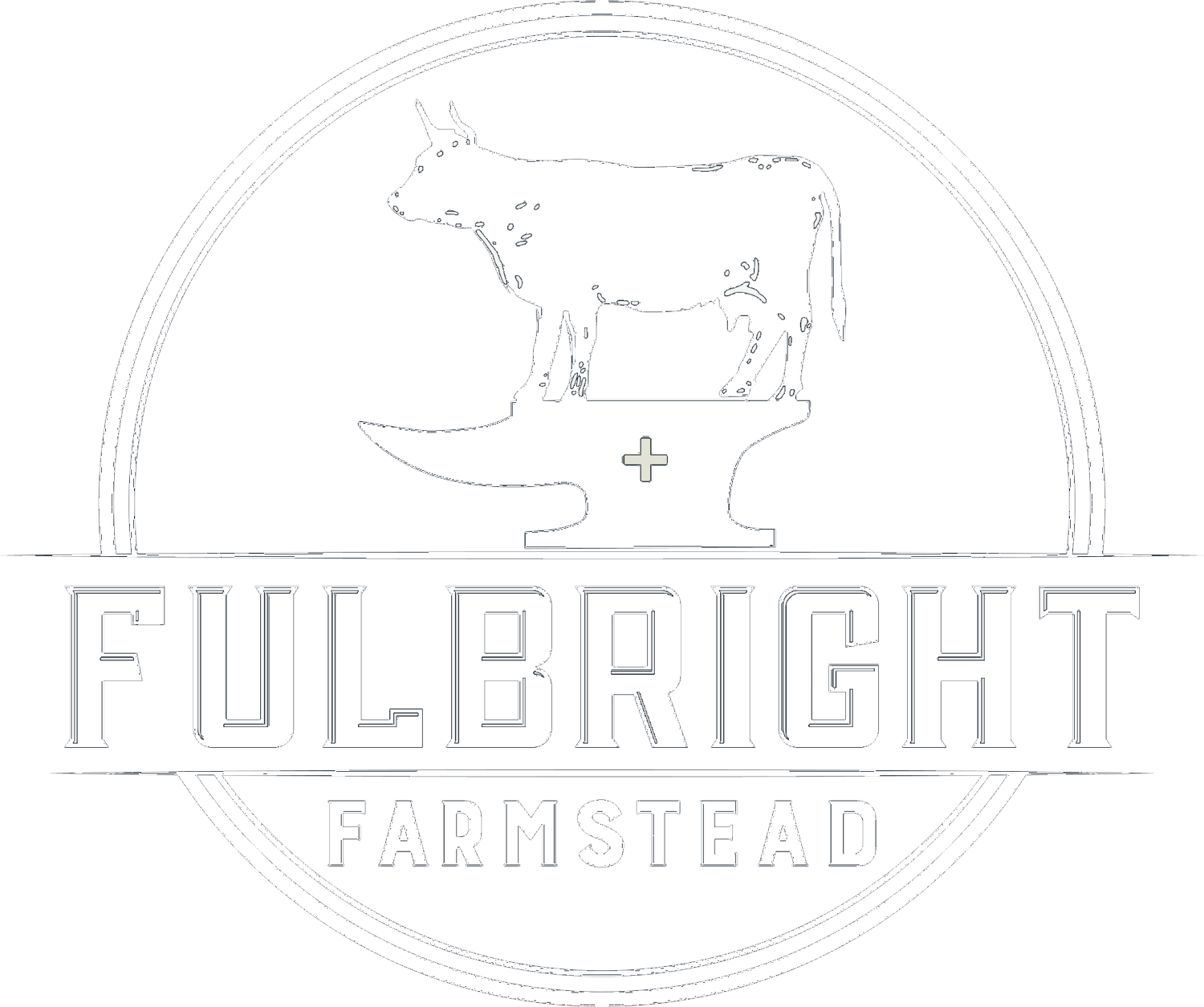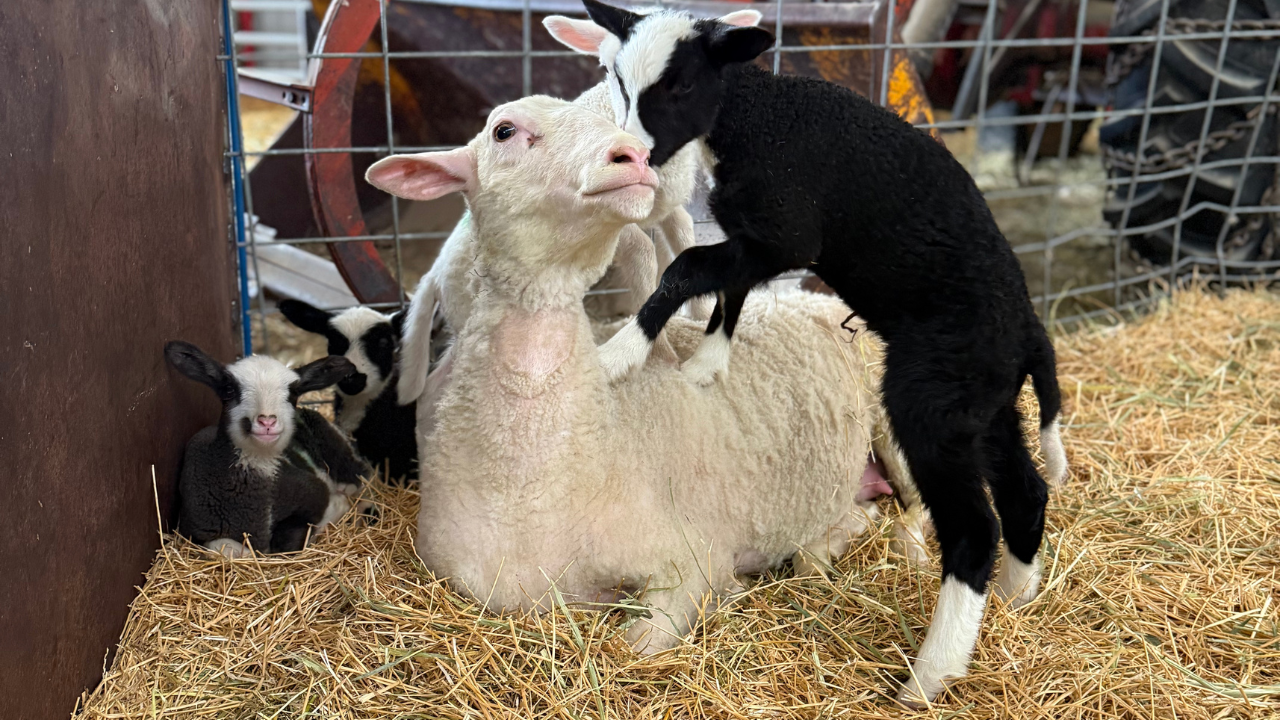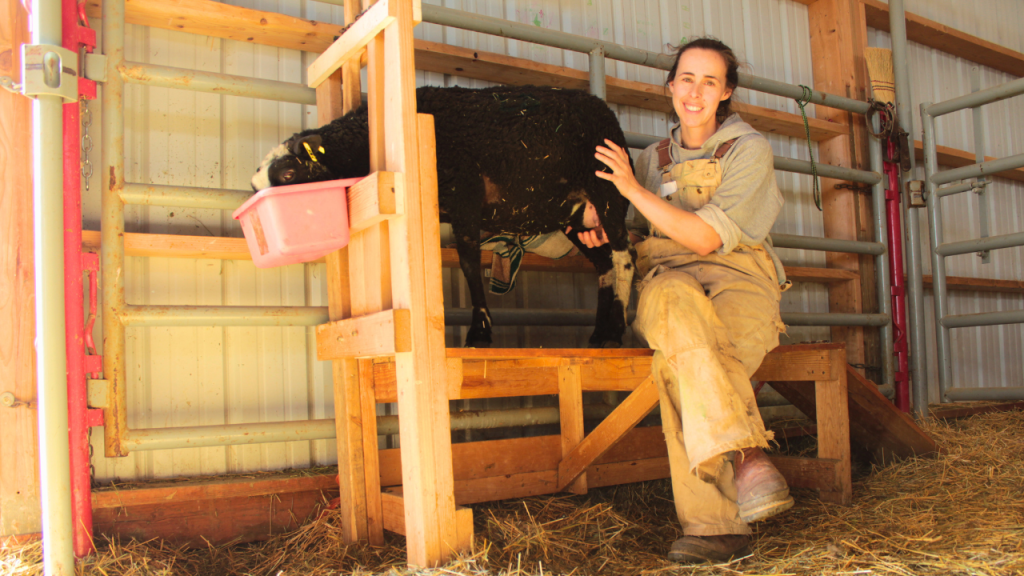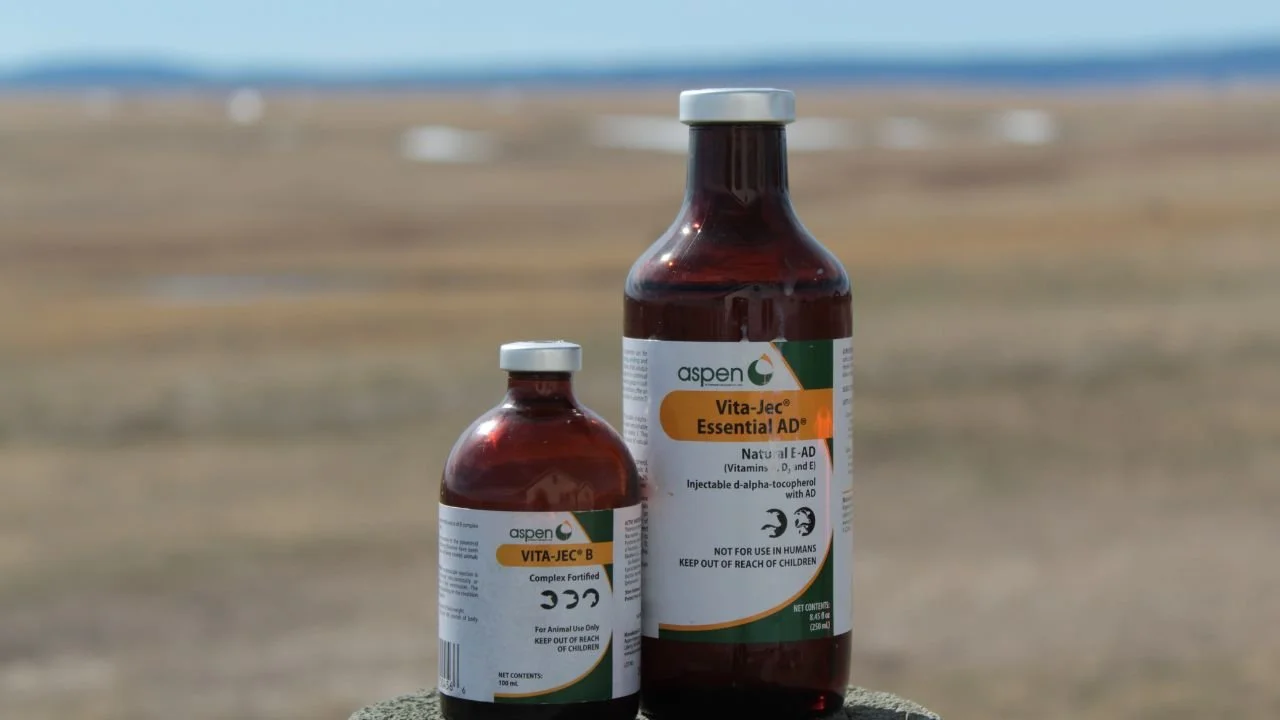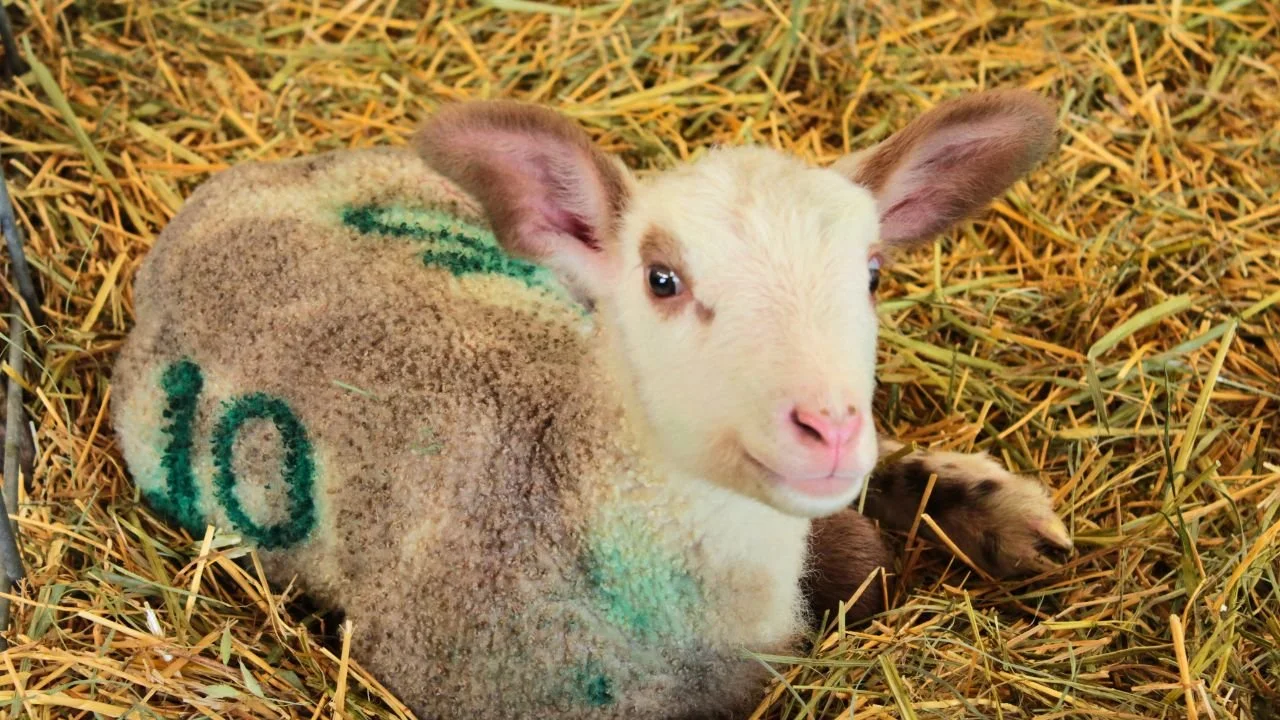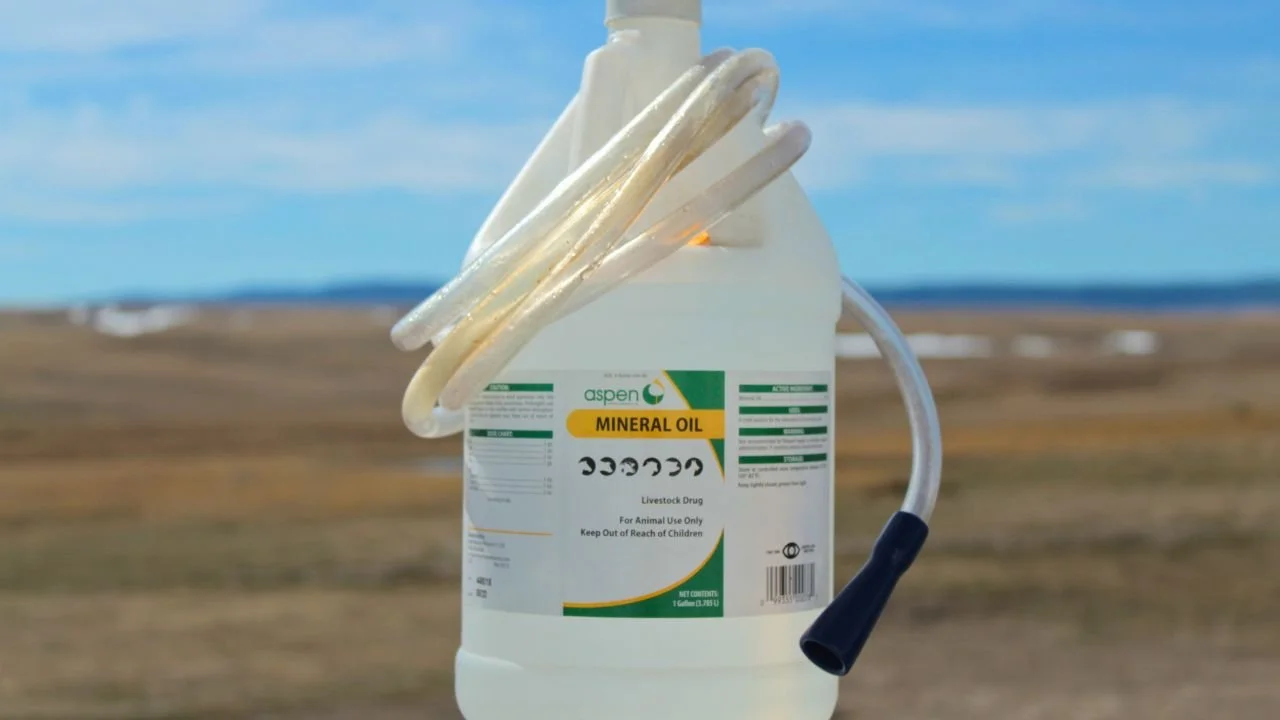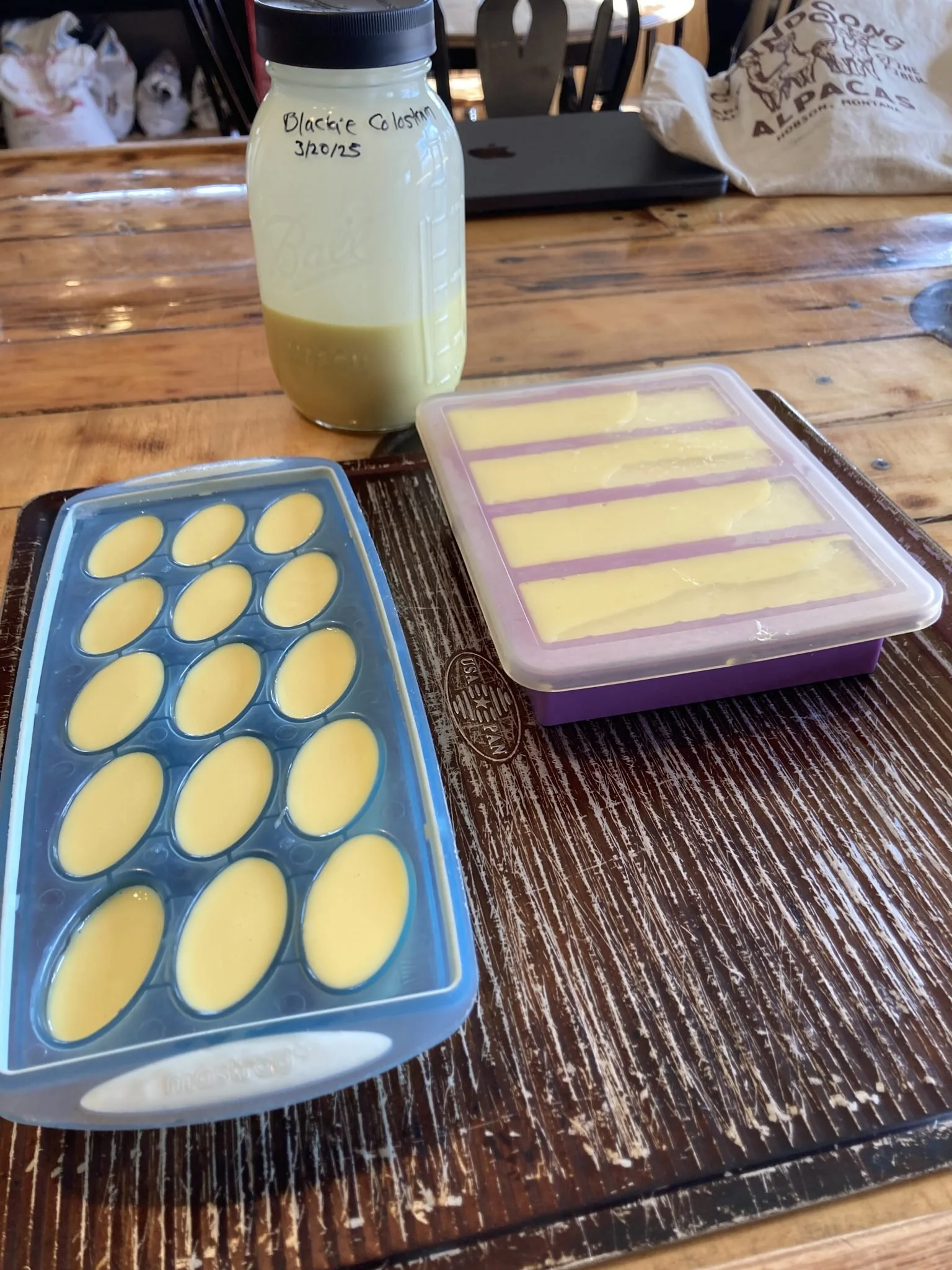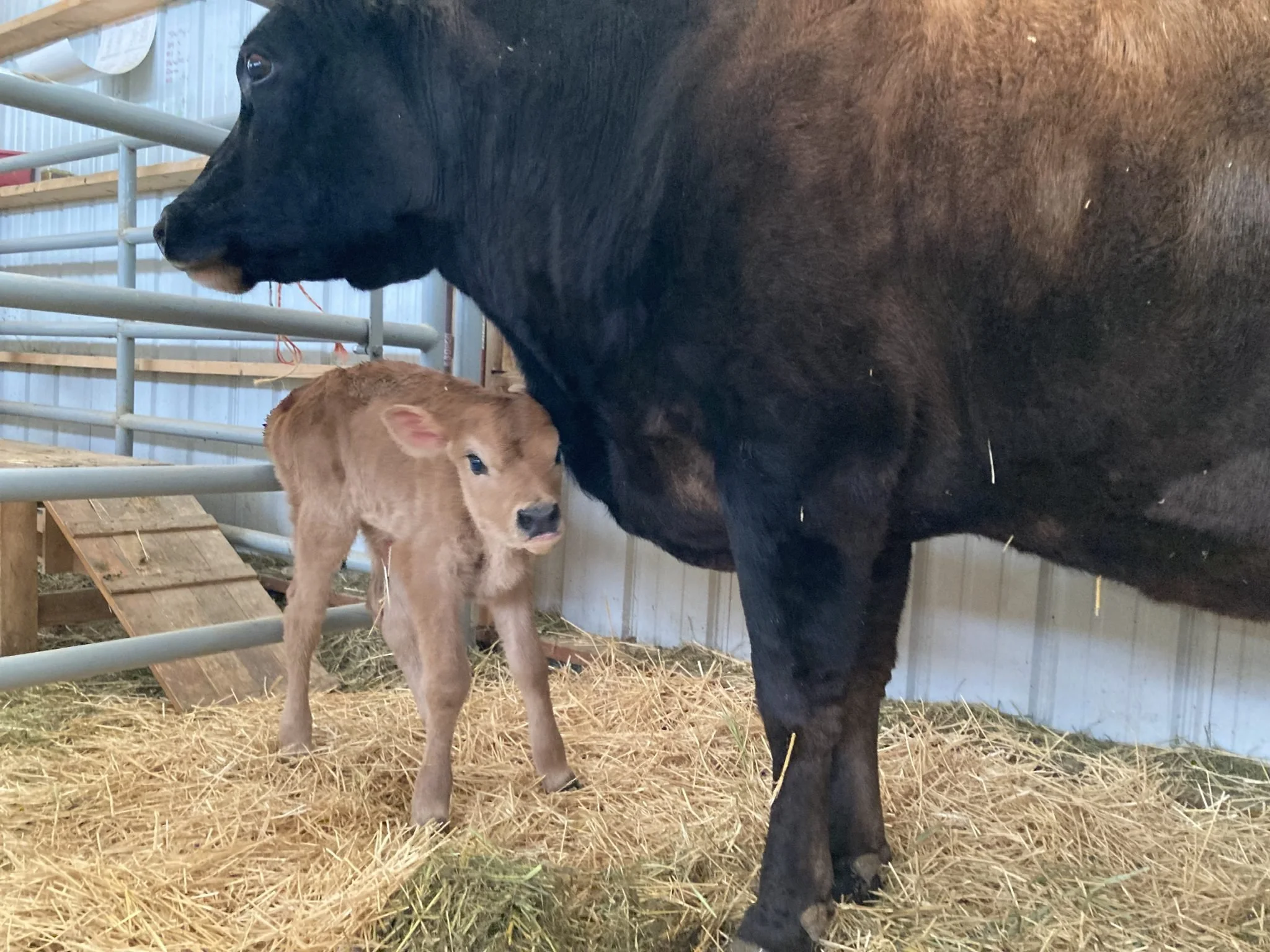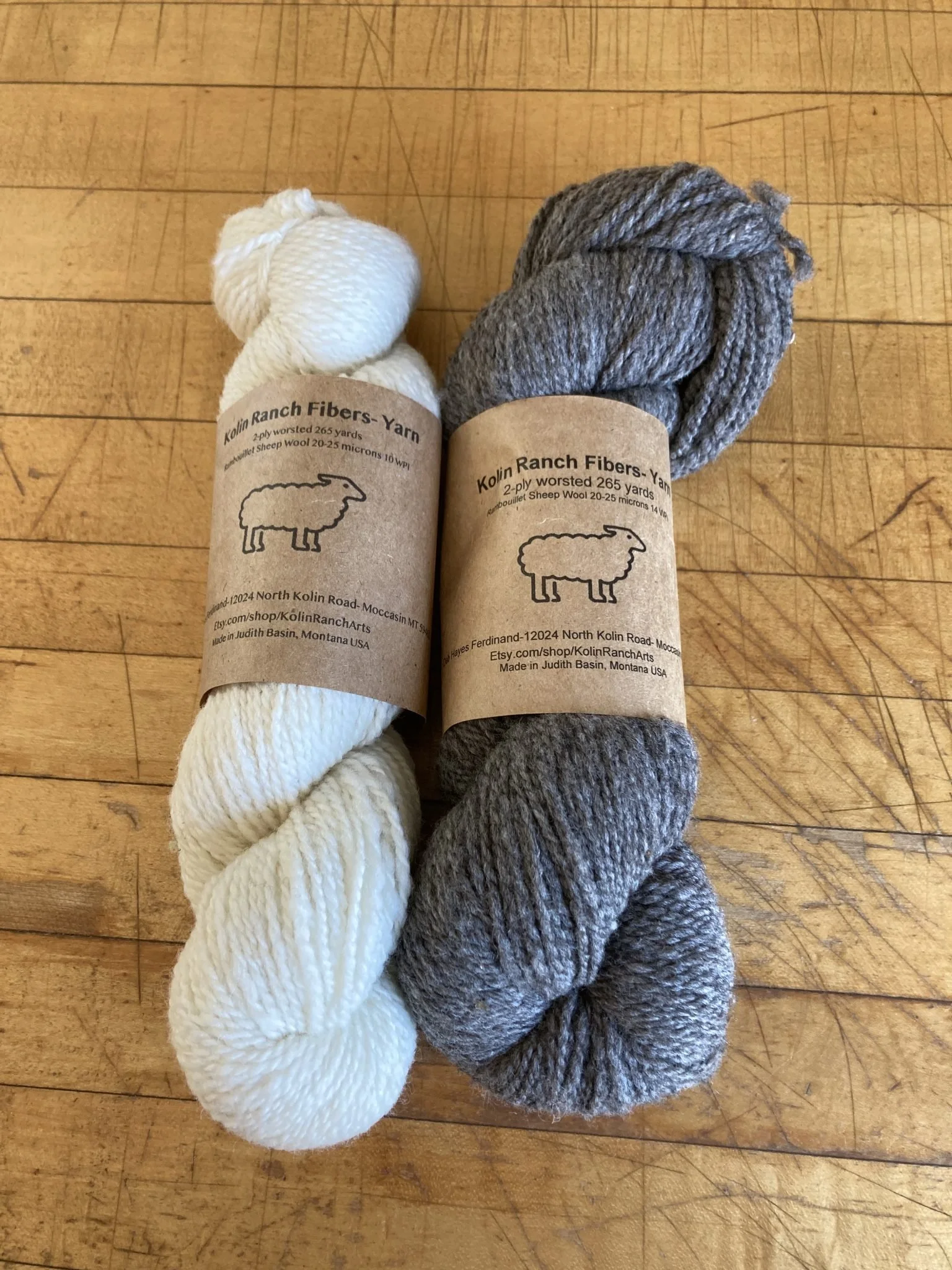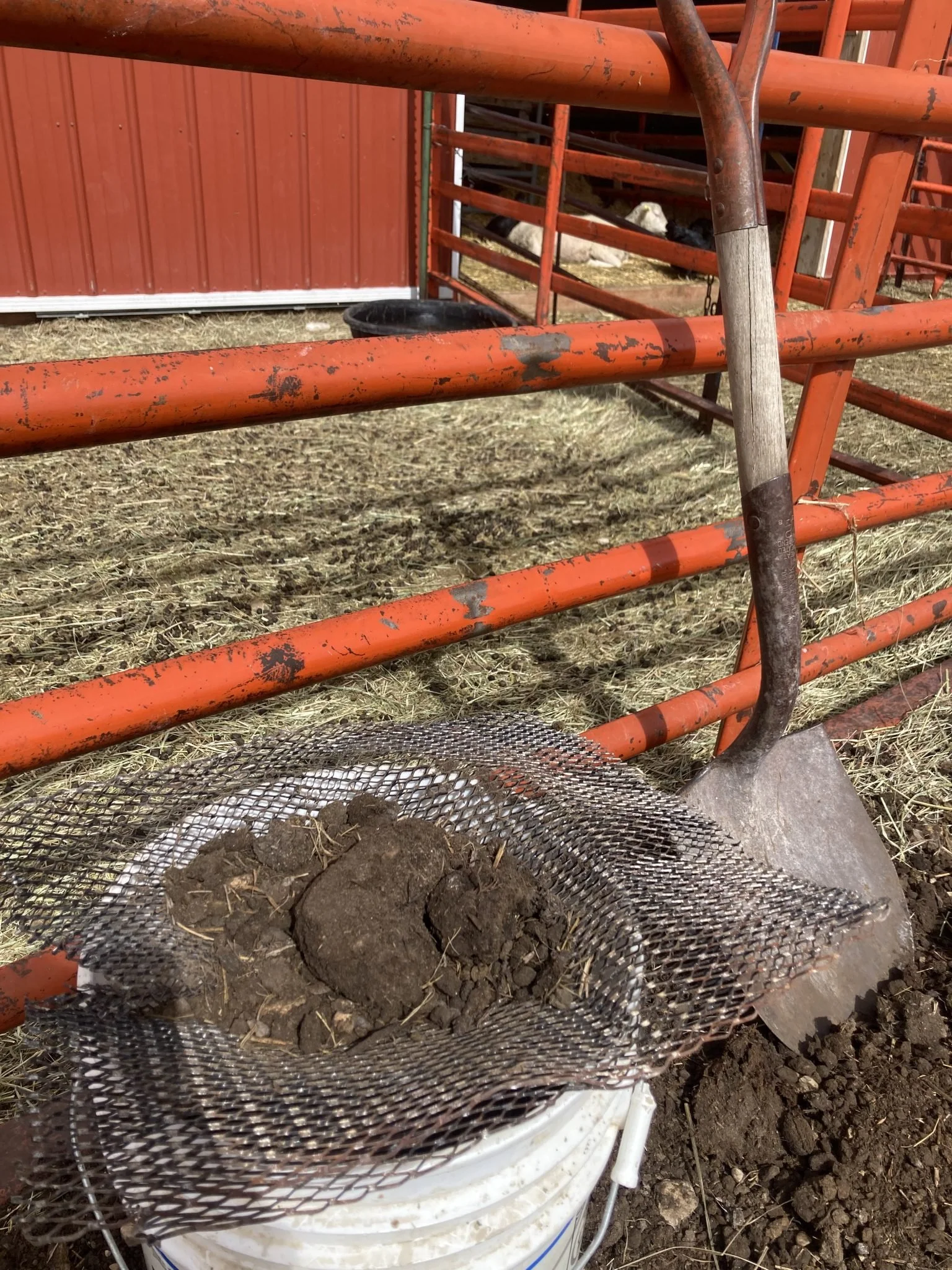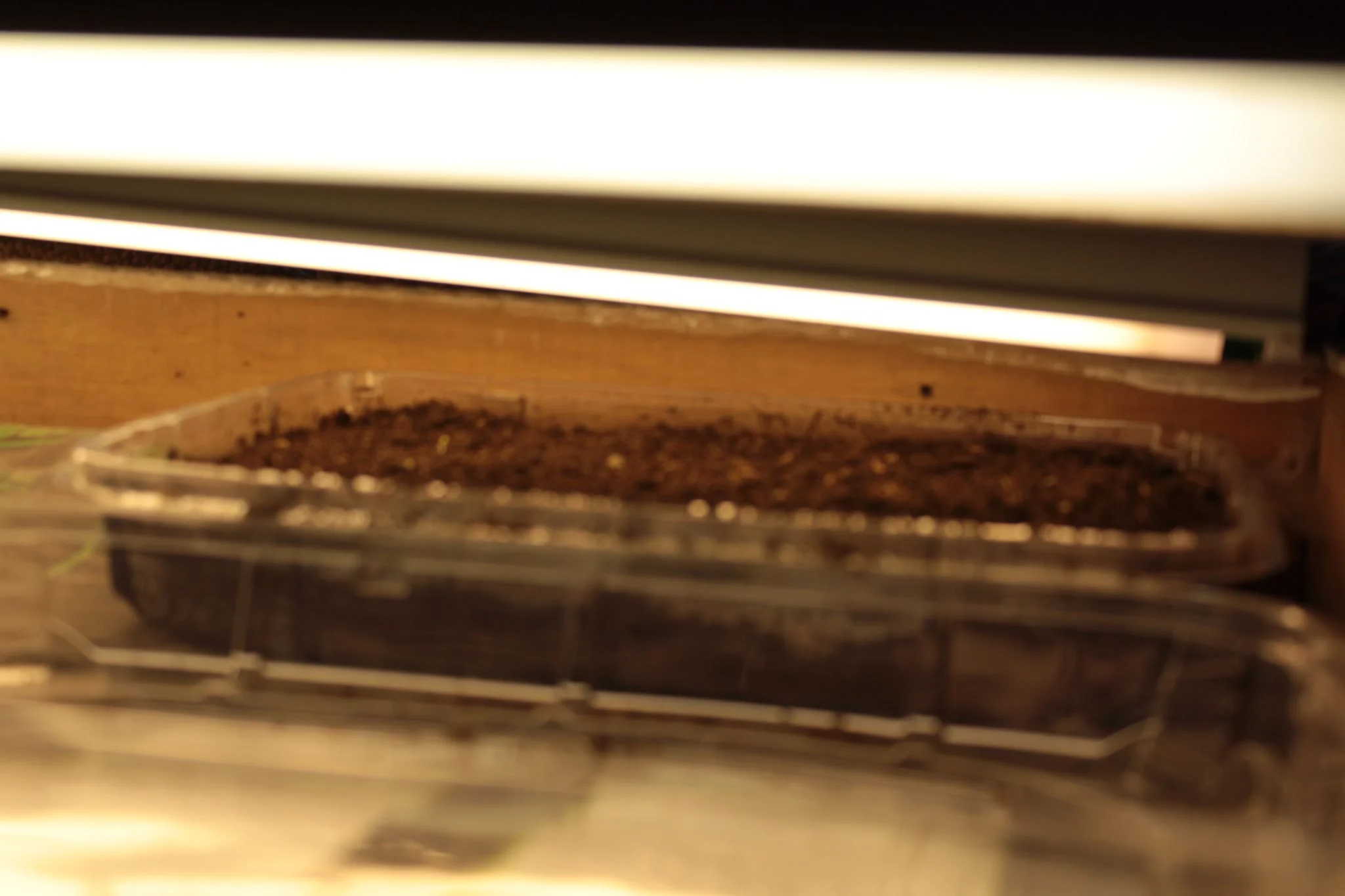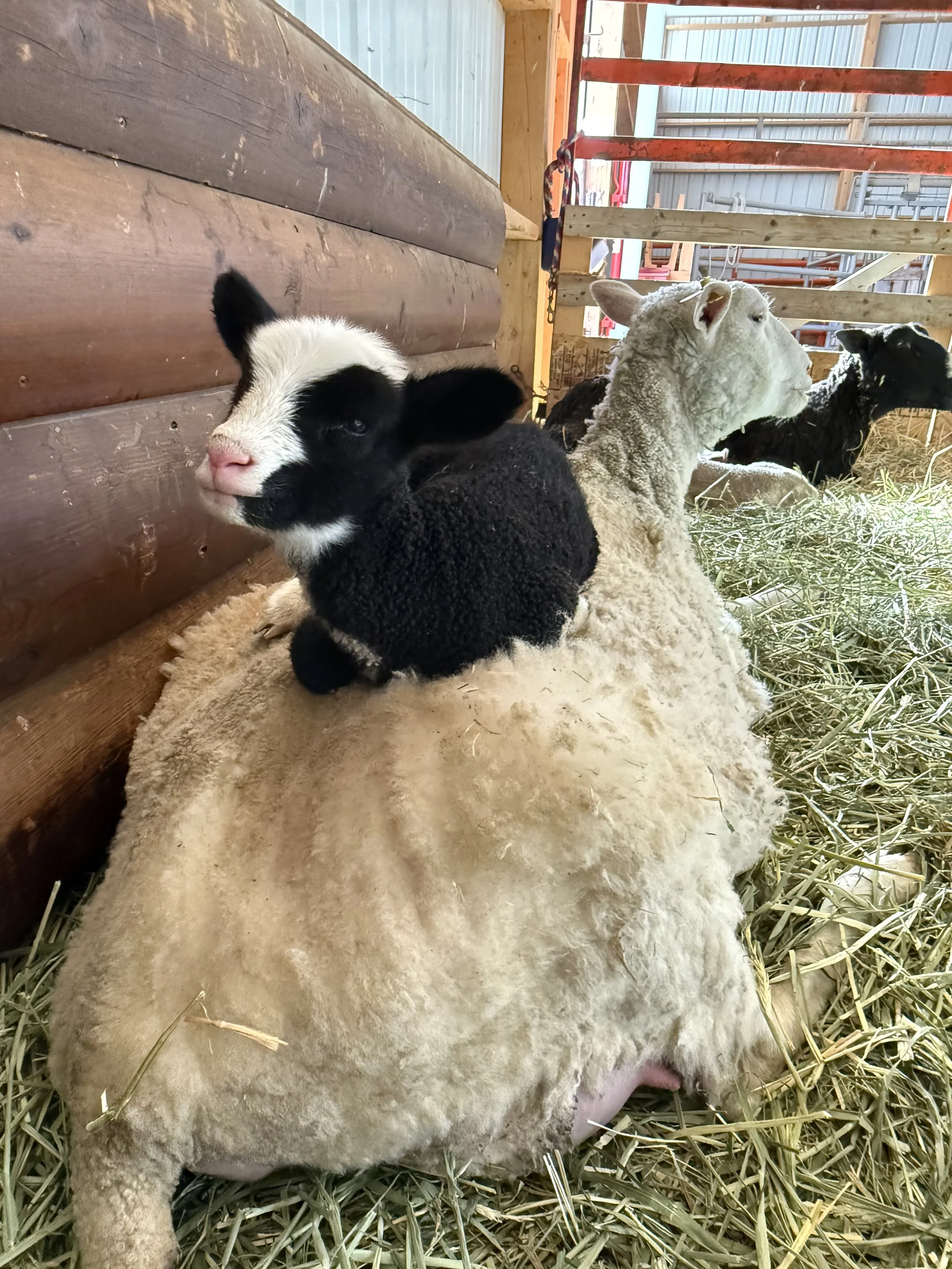March Farmstead Update: The Struggles We Didn’t Expect (And How We’re Overcoming Them)
Hey friends! Welcome back to Fulbright Farmstead! It’s been a wild month here, and we’ve had our fair share of challenges. March has been full of surprises, struggles and some incredible moments as well. Today, we’re diving into everything that’s been going on – what we didn’t expect, how we’re dealing with it, and the lessons we’ve learned along the way. Let’s get into it!
Working with Yearlings
First, I’ve been continuing to work with all of the yearlings to get them used to jumping up on the milking stand and get prepared for their future as milkers. Heavily bred is not the best time to do this as their ligaments get all loosey goosey and it can make jumping up a little unsafe. I just make sure I pay attention so no one falls or slips off the stand. Some have done really well and others – well let’s just say they are a bit more stubborn. But with patience and a little bribery (thankfully they love treats!) We’re making progress.
Keep an eye out next week for a post and video on how to train your ewe to the milk stand!
Sheep work day: Shearing, hoof trimming, vaccinating & fecal samples
Right at the beginning of the month we decided to take advantage of a warm spell (after -20F!) and get a bunch of sheep work done. First up on the list was shearing! Originally we were thinking we might just have to crutch our ewes (trim around their bums & udders) because it was so cold. Luckily, we had a break in the weather and we were able to get shearing done.
Along with shearing, Jayce also trimmed feet on any girls that needed it (not all of them did) and I vaccinated each with CDT. We did a thorough health check on each ewe including body condition scoring and got fecal samples from each for testing to ensure we’re on top of any parasites.
Have you ever collected fecal samples before? It was actually really funny. We enlisted our kids to follow the ewes around with these little baggies and collect a sample as soon as they eliminated. They thought it was weird but also hilarious!
We got the results back from the fecal samples. Most, but not all of our ewes needed dewormed. My plan for this year is to try really hard to be more intensive with rotational grazing so we won’t need to use dewormer! What are you doing to combat parasites?
One more thing I wanted to mention with vaccinating – make sure you keep an eye out on your ewes, sometimes they can feel a little punky afterwards. Normally I don’t have a problem but this year I did have one ewe not feel well for a couple days after the vaccine, she lost her appetite and just seemed a little out of sorts. I gave her a little supportive therapy (Vitamin ADE & B complex) and after about three days she was back to her normal self, eating and bright and alert.
Ewe aborting: A hard hit
Unfortunately we started off the season with one of our ewes aborting which was a tough blow. Nine days before our lambing window should have began, I noticed a ewe showing signs of labor. She was having very forceful contractions and nothing to show for it. Her udder wasn’t even developed yet.
After observing her awhile, I decided to go in and check things. From the outside she did not seem loose and dilated at all. I checked her and she didn’t seem dilated on the inside either. After I removed my arm she passed a tiny water bag.
Ringwomb is a condition where a ewe does not dilate for some reason or another. There is no way to dilate them, the lamb has to be removed via c-section.
False ring womb on the other hand, you can manually dilate them. I got to work and was able to get her dilated. Feet started to come along and after checking the mouth, I determined the lamb was already dead. I helped her deliver the lamb. A beautiful black and white ewe lamb.
Once you assist on one lamb it is good practice to check for more. I found another lamb and got to work pulling it. The front feet were coming alright but something else was wrong – no head. I felt all over with my hands and could not find the lambs head. After some time I finally found it, but despite my best efforts I could not bring the head into the position it needed to be in to be delivered.
My husband took over. He had to work on her for quite awhile but he was finally able to position the head and deliver the lamb, a white ram lamb. The lambs head was completely flipped up over onto its back. This lamb was also dead.
It was a rough day for me. I understand things happen, but why did this happen? I felt for my ewe. I felt as if I had failed her, as her shepherd. I knew the best thing I could do is learn from this experience so I sent some of the placenta and a lamb off to the lab. I wanted to make sure this was “just one of those things” that happen, and not something infectious.
I gave the ewe an antibiotic since the lambs were dead inside of her. I also gave her supportive therapy with injections of Vitamin A, D, E and B complex. She has recovered wonderfully and I have been milking her and using her as a nurse ewe for lambs that need a little extra since I have had so many twins born to yearlings.
Lambing season!
Now let’s talk lambing season – it has had it’s highs and lows but this year definitely brought some unexpected surprises – both good and bad. It started off slow and steady with the ewes. I do get up to check in the night – right at midnight then get up for the day at four am and check again. We’re about 2/3rds of the way through. I have 20 ewes bred and as of this writing / video 14 have lambed. Just today we’ve had 10 lambs and two calves born – a single lamb, a set of twins, a set of triplets and a set of quadruplets!
If you are interested in purchasing a lamb for meat or milk please send an email to: sari@fulbrightfarmstead.com
Surprise colorful lamb
One of the fun, unexpected surprises this lambing season was a white and red lamb born from two black parents. I love surprises like that! Where her color came from, I have no idea. She is the only one we’ve had like that so far. Luckily it’s a ewe lamb, born to a ewe with great hand milking teats so she’ll definitely be a keeper!
Bloated Ewe: A life or death situation
If you want to hear a story about being in the right place at the right time, this is it. My husband, toddler and I were out in the barn doing chores. Now normally after chores we head to the house to get the little guy ready for bed. This evening however, we had a yearling in labor and we decided to just stay out in the barn and watch and let the little guy play. Normally we just let the ewes have their space while in labor and come back to check on their progress after.
Thank goodness we stayed in the barn this time! While we were watching the yearling lamb, we started to notice some commotion in the mixing pen – one of our mommas was bloating and if we didn’t do something quick, we were going to lose her.
Her tummy was as tight as could be, and she was staggering around and falling down. I ran to the house as fast as I could, grabbed a tube and mineral oil. We quickly tubed her with mineral oil, followed by a baking soda drench. We kept her moving and massaged her rumen. Slowly (it felt like ages) the bloat went down and she returned to normal. Had we left the barn, we would have come back to find her dead, leaving two lambs behind.
Moral of the story: Bloat happens, make sure you are prepared to act! Have a tube on hand or at least something to drench with, and some sort of an oil (soapy water will work in a pinch). I keep a gallon jug of mineral oil on hand. I am so grateful we were able to save her life.
Freezing Colostrum: Cows & Sheep
When I have a ewe that has extra milk or a ewe that only has a single (hasn’t been the case so far this year) I like to save some colostrum. It is a simple, but very important thing to have on hand for lambing season. Did you know that for the best immunity through colostrum lambs should consume a whopping SIX OUNCES of colostrum in the first 30 minutes of life? I’m sure it varies depending on the size of the lamb but the point is, it is a lot more than you would think! Normally I just save my colostrum in one big container, but this year I used my silicone butter mold and froze my colostrum in that and in ice cube trays. We’ll see how I like that idea next year!
Calving!
Speaking of livestock, we’re also in the midst of calving season! We AI our cows every year which I love because it gives them a tight calving window and we don’t have to take care of a bull year around. This year due dates put us at the last couple days in March, but our first heifer went a week early, followed by my milk cow a couple days later and two more cows a couple days after that. Just my dairy heifer left!
The Jersey calf has the typical Jersey underbite, and she might just be the cutest thing ever. Hopefully the other milk cow will have a heifer too!
Milking: But not getting much!
I’ve been milking the ewe that lost her lambs and my old milk cow “JG”. Despite having two gals in milk, I’m getting only about a half gallon per day. JG has a lot of edema and the milk hasn’t really started flowing yet. Hopefully it’ll start soon and we can resume cheesemaking and all the things!
Smoking Cheese: A learning experience
In other news, the frozen sheep milk Colby I made a couple months back (read more about it here and here) was finally ready to eat! I decided to cut it in half and trying smoking half of it. I smoked it right on my propane barbecue. It turned out great! To learn more about using a barbecue to smoke cheese, check out this post. While the smoking went well, the cheese itself didn’t turn out quite like I hoped. Sometimes, things don’t turn out perfect, but that’s how we learn and grow, right? I’ll fix my mistakes and make it better next time, and I hope you will too!
The Bunkhouse
On a lighter note, we had wonderful guests staying in the bunkhouse this month – one being an amazing fiber artist who gave us a beautiful gift: yarn spun from her flock of sheep! It’s such a thoughtful gesture, and we’re excited to see what projects come out of it. If you have any ideas what I should make with it please comment below and let me know!
Spring has sprung?
As spring seems to be making its way to Montana, I decided I better get started on the garden. I spent one afternoon sifting compost to make seed starting soil and then planted two hundred or so onion seeds. They have since germinated and are now growing under the lights in my basement!
I thought I would try something new this year and attempt direct sowing onions. Have you ever tried it? I never have but Theresa at Prairie Road Organic Seed says she has been having success with that method so I thought it is worth a shot!
Warm season crops (tomatoes, peppers, etc) will be started next. Heres hoping for an excellent garden in 2025!
Final note
So that is our March farmstead update! It’s been a month full of surprises, some difficult moments, and a lot of growth. We’re learning every day and we wouldn’t trade this life for anything. Want to try homesteading out for size? Book a stay with us here!
Thanks for following along with us, and we can’t wait to share more updates as we move into the spring season. If you’ve experienced any of these challenges on your farm, or if you have tips or advice, drop a comment below – we love hearing from you!
As always, don’t forget to like and subscribe for more updates from the farmstead. Until next time, take care, and enjoy the beauty of new life on the farm in spring time!
Pin it for later
Pin Image https://bulldog-koi-4dg2.squarespace.com/s/3-1.png

